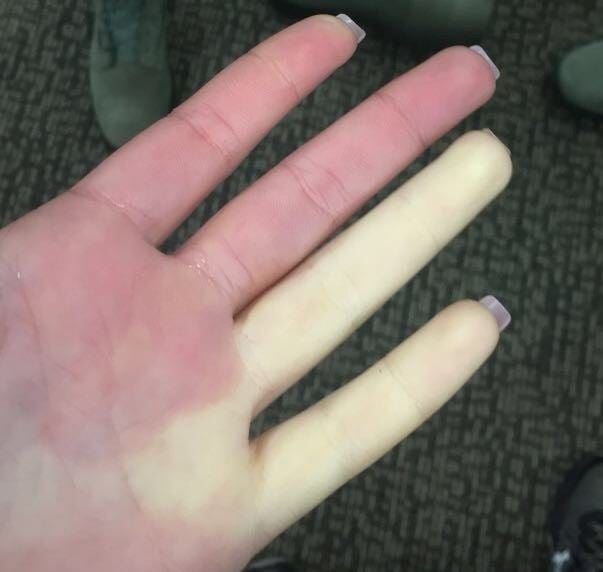Raynaud syndrome, also known as Raynaud’s phenomenon, is a rare medical condition that limits blood supply to fingers, and sometimes to the toes, causing them to temporarily turn white or blue.
Named after physician Auguste Gabriel Maurice Raynaud, who first described it in his doctoral thesis in 1862, this rare condition can be described as an overreaction to stimuli like cold or stress. In the case of the former, the body tries to conserve heat by slowing down the flow of blood to the farthest points, such as the fingers. To do that, the small arteries that carry blood to those points constrict, thus causing the extremities to temporarily turn white, and then blue, due to the prolonged lack of oxygen in the affected area.

Photo: Profpedia/Wikimedia Commons
Raynaud’s phenomenon usually lasts about 15 minutes, but can last for several hours, after which the arteries relax and the blood once again reaches all the way into the affected person’s extremities. Pain sometimes occurs during these attacks, but usually it’s just a tingling sensation in the affected area, after which the fingers turn bright red, before gong back to their usual color.
Doctors don’t completely understand what causes some people’s bodies to overreact to cold and stress, and there is no known cure for this
rare condition. It is believed that around 4% of people experience Raynaud’s phenomenon, but the severity of attacks varies. In some cases, the contrast between normal fingers and those where blood circulation is restricted is almost disturbing.
Raynaud syndrome doesn’t usually affect sufferers’ quality of life, but in very rare, extreme cases, the reduced blood flow is so severe that can cause tissue damage like skin ulcers or even dead tissue which could require having that part of the body removed.
In certain sufferers, even mild stimuli like air conditioning or touching cold surfaces can trigger Raynaud syndrome attacks.

